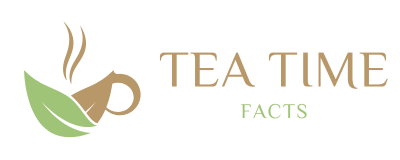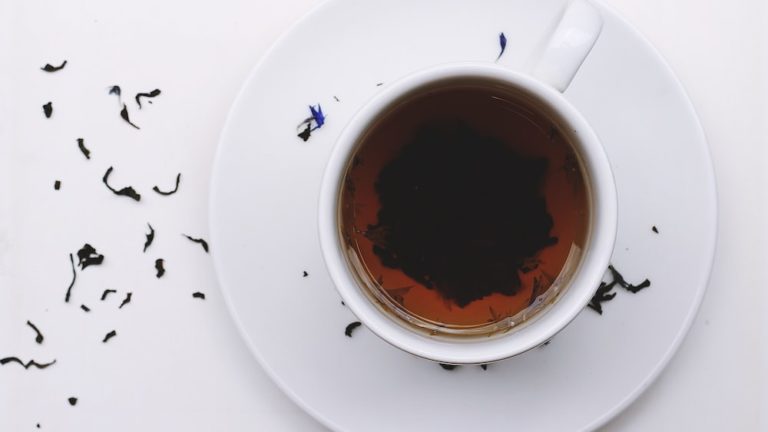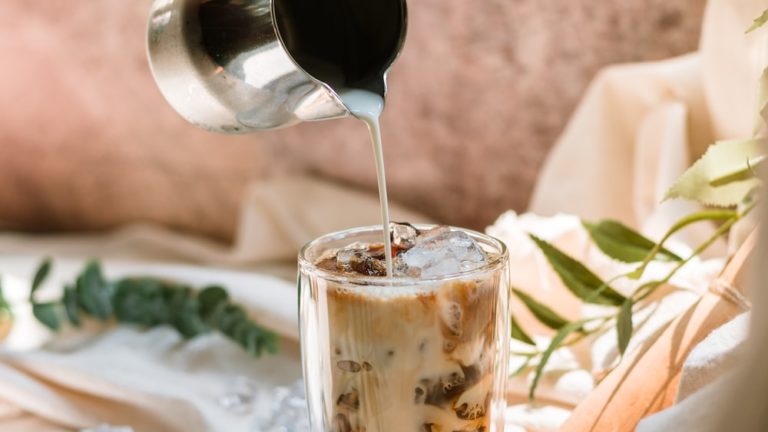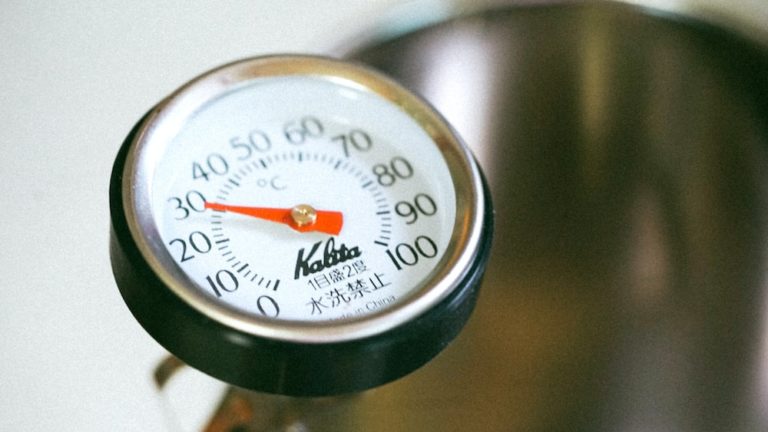Pu Erh Tea Caffeine Content: What You Need To Know

Pu Erh Tea Caffeine Content: What You Need To Know
Hey there, tea lovers and wellness warriors! Are you ready to dive into the world of pu erh tea and its mysterious infusion of vitality? I know I’m steeped in anticipation! Pu erh tea caffeine content has been a topic of many a heated discussion in the tea community. Some folks swear by its gentle kick, while others treat it like the Loch Ness monster of the tea world – elusive and shrouded in legend.
Key Points:
- Pu erh tea caffeine content varies based on factors such as processing, age, and brewing techniques.
- There are two types of pu erh tea: raw (sheng) and ripe (shou), each with its own unique caffeine profile.
- Pu erh tea offers a moderate caffeine level, providing steady alertness without the abrupt drop-off associated with coffee.
- Moderation of caffeine consumption in pu erh tea is generally safe, but individuals should be mindful of their overall caffeine intake and personal sensitivities.
- Caffeine in pu erh tea may offer mental alertness, potential metabolic benefits, and protection for the liver, but it can also cause insomnia and jitteriness for sensitive individuals.
- Brewing techniques and methods can influence the caffeine extraction in pu erh tea, allowing for customization of caffeine intake.
- Pu erh tea’s caffeine content decreases with age, making older pu erh teas a gentler option for those sensitive to caffeine.
So, let’s get this pot brewing with an enlightening journey through the misty mountains of Yunnan, shall we? We’ll unravel the tapestry that is pu erh tea, its place in the caffeine cosmos, and how it fits into your daily ritual of rejuvenation. Whether you’re a noble scholar of the leaf or just tiptoeing into the realm of the reddish-brown elixir, this blog post is the treasure map to guide your quest.
From its probiotic prowess to its heritage that’s as rich as a well-aged pu-erh, we’re here to demystify the caffeine content of this ancient brew. Turn the kettle on, grab your finest cup, and prepare to savor the flavor, culture, and, oh yes, the science of pu erh tea caffeine content. Let’s steep to it!
Unveiling Pu Erh Tea
In the venerable halls of the tea kingdom, where venerable sages sip wisdom from their cups, pu erh tea sits on a throne of earthy grandeur. Known for its complexity, this fermented wonder has enchanted palates and sparked curiosity since the Eastern Han Dynasty. It’s not just a beverage; it’s a lifestyle, a fine art that demands the connoisseur’s full attention and respect.
The Origins and Processing of Pu Erh Tea
Nestled within the verdant embrace of Yunnan Province, pu erh tea begins its life in a cradle of biodiversity, flanked by ancient tea trees whose roots whisper tales of millennia. Pu-erh is not merely produced; it’s crafted with techniques as old as the hills from which it hails. L-theanine and caffeine mingle in the leaves, potent potential awaiting release.
The traditional processing of pu erh tea involves a natural fermentation that could rival a fine wine’s maturation. The leaves are pan-fried, rolled, and then lovingly left to develop character and depth through microbial fermentation. This alchemy transforms the young, green leaves into a tea with a soul that deepens over time, like the wisdom of an elder.

Pu erh tea is crafted in Yunnan Province with ancient techniques, undergoing natural fermentation to develop depth and character like a fine wine.
Raw vs. Ripe Pu Erh: Understanding the Differences
Hold on to your teacups, dear readers, for the world of pu erh is nothing if not dualistic. We have two siblings in this family: raw pu erh and ripe pu erh. Raw, or ‘sheng,’ is like the untamed wildling of the pair, embarking on a slow dance of natural aging that can last decades. It’s the highlander of teas, with a fortitude that grows stronger with age.
Conversely, ripe, or ‘shou’ pu erh, is the prodigy that has been fast-tracked to maturity. A post-fermentation process accelerates the aging, ensuring that the tea develops a full-bodied, mellow character in a shorter span of time. Think of it as enrolling in a finishing school for teas, emerging debonair with smooth, earthy notes.
Caffeine Content in Pu Erh Tea
Now, hold onto your hats – or should I say, teapot lids – as we discuss the caffeine content in pu erh tea. The caffeinated kick is a source of both energy and conversation amongst aficionados. How does it measure up? It’s the Umberto Eco of teas, complex and intellectual, calling for punctuation with a sip rather than a period.
How Does Pu Erh Compare to Other Teas and Coffee?
When it comes to pu erh tea caffeine content, think of it as the middle child, a balancing act between the meditation of green tea and the robust wakefulness of coffee. Compared to its leafy siblings, pu erh typically struts a moderate caffeine level, allowing for a steady alertness, without the cliffhanger drop-off that coffee might subject you to.
Raw vs. ripe pu-erh, each has its own unique profile, influenced by their respective processing and aging rites. Raw pu-erh may have a naturally higher caffeine footfall, potentially comparable to black tea. Whereas ripe pu-erh, akin to a well-seasoned actor, knows how to deliver its line of caffeine with poise, often presenting a more grounded, tamed experience.
The Impact of Processing on Caffeine Levels
The grand reveal, my dear tea-trotters, is that processing plays the role of the puppet master in the theatre of caffeine content. It’s in the fine art of fermentation and aging where caffeine finds its rhythm within pu erh tea. Intriguingly, the microbial fermentation involved in producing ripe pu-erh is like a dimmer switch on caffeine, mellowing its jolt, while preserving the rich tapestry of flavors.

Processing, particularly fermentation and aging, is the key to regulating caffeine content and enhancing flavors in pu erh tea.
Factors Affecting Caffeine Levels in Pu Erh Tea
And now, into the briar patch of factors affecting caffeine levels in pu erh tea we go. It’s no simple equation; it’s like the calculus of the beverage world, where age, type, and even the twists and turns of the brewing process play part in the alchemical equation. Let’s unravel these threads together, shall we?
The Role of Tea Leaf Age
In the grand theater of pu-erh production, tea leaf age takes the stage with a weighty presence. Much like the rings of an ancient tree, each year adds to the leaf’s narrative, influencing the caffeine storyline. Younger leaves, bright-eyed and bushy-tailed, come loaded with caffeine and ambition.
As time waltzes on, older leaves play the wise sage, often heralding a gentler caffeine applause. Their experience in the biome of biodiversity also imparts a depth of character – a tapestry of flavor that is as rich in story as it is in substance.
Variations by Type of Pu Erh Plant
But wait, there’s more to this plot! Variations by type of pu erh plant add further spice to our tale. Each type of tea tree – be it an ancient arbor or a younger bush – sings a different caffeine aria. In a twist worthy of a detective novel, tea trees from different mountain terrains, with their unique microclimates and soils, gift their leaves with distinct caffeine compositions.
These botanical detectives – let’s call them ‘leaf sleuths’ – survey their environmental landscapes, picking up trace elements and flavor clues along the way. The tea made from these leaves tells the story of its origin with subtle hints of caffeine and whispers of terroir.
The Brewing Process and Its Influence
But of course, no detective story is complete without the intricate nuances of the brewing process and its influence. The temperature of water, the length of time the leaves swim in their hot bath, and even the vigor with which you pour – each is a stanza in the poem of caffeine extraction.
A longer steep time will coax more caffeine out of pu-erh’s tenacious leaves, just as a hotter water temperature can turn the gentle steep into a rush-hour extraction. The dance of these variables can make the same leave yield a soft waltz or a caffeinated tango according to the brewer’s hand.
Health Implications of Caffeine in Pu Erh Tea
As we near the end of our tale, it’s vital to consider the health implications of caffeine in pu erh tea. This is not a mere footnote but an essential chapter that mingles scientific enlightenment with the personal narratives of our bodies. Bearing witness to how the invigorating spark of caffeine animates our day can be an odyssey of self-discovery.
Potential Benefits of Caffeine Consumption
Let’s talk turkey about caffeine, shall we? We all know it as the world’s favorite legal stimulant, and for good reason. Caffeine, when sipped in Pu Erh tea, can be like that friend who nudges you awake, whispering motivational quotes to get you out of bed. Research suggests moderate caffeine consumption may improve mental alertness and could even reduce the risk of cognitive decline as we waltz into our golden years.
But here’s where it gets juicy: caffeine isn’t just about catapulting your brain into hyperdrive. It can also galvanize your metabolism, helping you battle the bulge with a bit more brawn. Plus, it’s been associated with a lower risk of stroke, and let’s not forget its potential role in protecting the liver like a tiny, invisible shield. Just imagine that for a second – all those benefits swirling in your pu erh tea cup!
Caffeine in Pu Erh tea can improve mental alertness, boost metabolism, lower the risk of stroke, and potentially protect the liver.
Considerations for Sensitive Individuals
Now, for those with the constitution of a delicate tea leaf in a storm, caffeine could be such a frenemy. Ever see someone turn into a quivering mess after a cup too many? It’s like watching “Jekyll and Hyde: The Caffeine Edition.” If you’re caffeine-sensitive, pu erh’s content can cause insomnia, jitteriness, and even palpitations, so sipping it after dark might turn you into an owl – wide-eyed, sleepless, and a tad bit disoriented.
But don’t despair, my caffeinated compatriots, there are ways to stay on caffeine’s sunny side. Hydrating like you’re crossing the Sahara and keeping a keen eye on your total intake are key. If your heart flutters more than a lovestruck teenager with every sip, keeping a diary of your reactions might just help you tailor your perfect dosage.
Moreover, for the truly tender among us, let’s remember that Pu Erh tea contains less caffeine vs coffee. So, it can be a more mellow ride on the caffeine coaster. It’s about knowing your limits and listening to your body – because nobody knows your inner temple better than you.
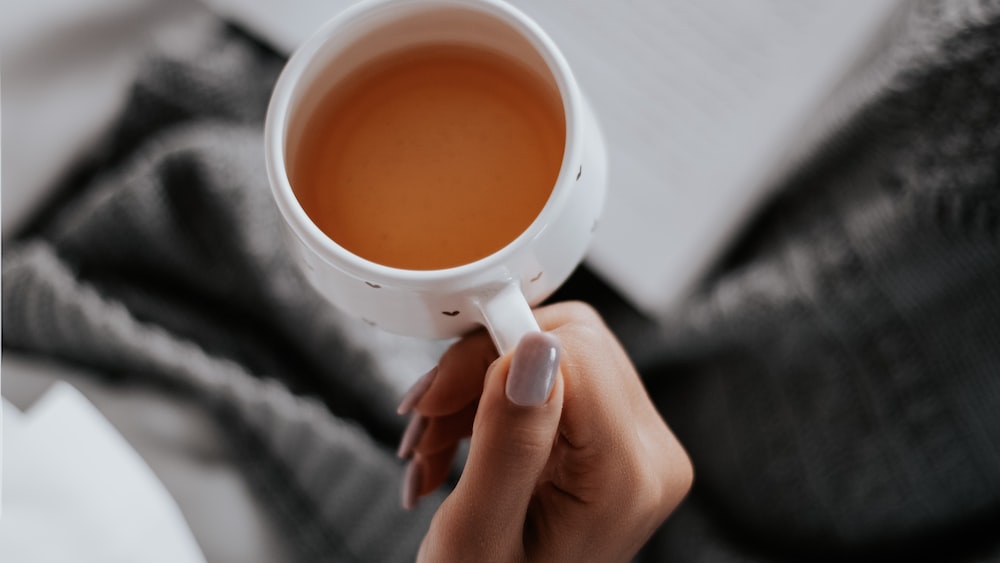
Maximizing the Pu Erh Experience
Oh, Mighty Pu Erh, you complex creature, full of depth and mystery! To really get the most out of your brew, you’ve got to court it gently, tease out its nuances, and let its hidden charms unfold. Maximizing the Pu Erh experience isn’t just about unleashing flavor, it’s about engaging in a delicate dance to extract just the right amount of caffeine for your personal symphony of stimulation.
Brewing Techniques for Optimal Caffeine Extraction
So, you want to wring every last bit of oomph out of your Pu Erh? Well, steep carefully, grasshopper, for the art of brewing is sacred. The temperature of your water should be as hot as a summer’s day in the tropics – think around 95–100°C (203–212°F) – to cradle those leaves into releasing their potent elixir. The brewing time is a tango between too little and too much; around 2-5 minutes should have you dancing that goldilocks zone of ‘just right’.
If you’re after that extra kick, keep in mind: more leaves, more caffeine. Yes, it’s that simple. But like a good love story, it’s all about patience – longer infusions draw more caffeine, yet dance with too much vigor, and you might elicit a bitter backlash from those tea leaves.
Tips for Reducing Caffeine Intake While Enjoying Pu Erh
What if you’re like, “I love you Pu Erh, but sometimes you’re too intense”? Well, fear not! There are ways to keep it light. First up, rinse your leaves with a quick, hot splash before the actual brew; this mini wash might rid you of some jitters by reducing the caffeine content ever so slightly.
Secondly, shorter infusions are your ally. Be swift, be sleek – around a minute should be sufficient to flirt with flavor without dragging out too much caffeine. Lastly, if you’re still antsy about overindulgence, why not share a pot? Because good things AND Pu Erh are better when shared. It’ll halve the caffeine and double the joy.
FAQs
1. How does the caffeine content in Pu Erh tea compare to that of green tea?
The caffeine content in Pu Erh tea is generally higher than that of green tea. Pu Erh often contains more caffeine because of its unique fermentation process and depending on how it’s brewed, but typically, it’s found somewhere between green tea and black tea in the caffeine spectrum.
2. Can Pu Erh tea be a suitable alternative for coffee drinkers?
Pu Erh tea can be a suitable alternative for coffee drinkers, especially for those looking to lower their caffeine intake. Although Pu Erh’s stimulant level is less than coffee’s, it offers a similar energy boost along with a complex flavor profile that might just win over some coffee aficionados.
3. Is it safe to consume Pu Erh tea daily considering its caffeine content?
It is generally safe to consume Pu Erh tea daily, as the caffeine content is lower than in coffee and can be moderated depending on brewing methods. However, individuals should be mindful of their overall caffeine consumption and personal sensitivities.
4. Does the caffeine content in Pu Erh tea decrease with age?
Yes, the caffeine content in Pu Erh tea decreases with age. Aging can mellow the tea, leading to a reduction in caffeine levels over time, making older Pu Erh teas a gentler option for those sensitive to caffeine.
Conclusion
As we’ve unfurled the leaves of knowledge, it’s clear that the pu erh tea caffeine content wields both a bouquet of benefits and a cautionary whisper for the sensitive-souled. With each sip, we navigate a world where tradition meets science, and personal preference is the compass that leads us. And so, we steep on, exploring the aromatic labyrinth of Pu Erh with curiosity and care, ever-aware of the pu erh tea caffeine content shaping our journey.
In the realm of Pu Erh, the alchemy of leaves has shown us that with knowledge comes power; the power to elevate our experience, to harness the mighty molecule of caffeine for our wellness, and to sip responsibly into the sunset of our desires.
With fragrant echoes of our tea-steeped saga lingering on, it’s my hope that your cuppa brings you vibrance and vigor, cushioned by the tranquility only a fine pot of tea can bestow. Until next time, steep well, friends, and may your Pu Erh quest be forever pleasurable. Cheers to your health and happiness!
With warmth and whimsy,
Zoe
